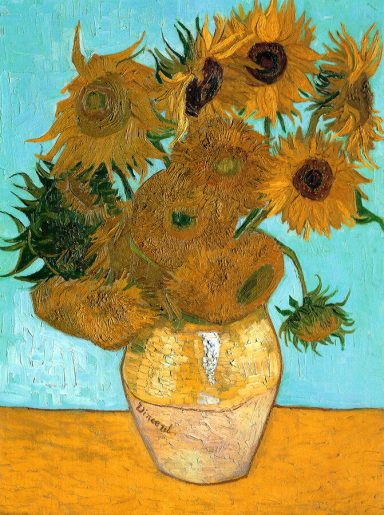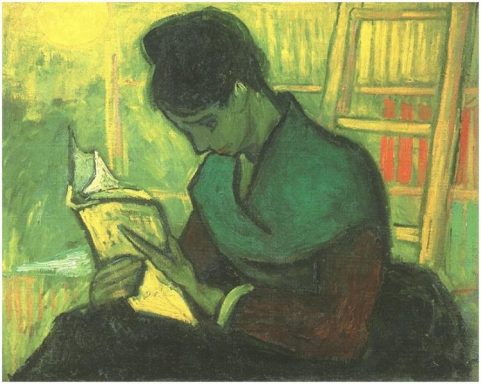The Artist...
Vincent Van Gogh
April 2025
The tale of Vincent Van Gogh teaches us that impact can not always be measured in the present.
Born in Zundert, Netherlands on March 30th, 1853, and died in 1890, only 37yrs old. A Post- Impressionist painter who created more than 2,000 artworks in over a decade, 860 are mostly the oil paintings that he created in the last years alive. He is known for his bold use of colour, expressive brushwork and oh, the emotional depth! Considering how popular he is now (and artists such as myself being inspired to create), he was largely unknown and highly unappreciated during his time on this plane of Earth. His work didn’t fit into the Art world at a time that favoured...well, not him :( The general consensus was that his work was ‘ugly’, scandalous and priced way too high. He was mentally unstable, unsociable, abrasive and unfortunately, uninterested in marketing himself. He was cared for financially by his younger brother, Theodorous who would later become his closest confidant, known through years of letters that they exchanged.
To start at the beginning (as one always should), his father, Theodorus Van Gogh, was a Protestant minister, and his mother, Anna Cornelia Carbentus, was an artistically inclined woman who loved nature and drawing. Vincent was the eldest of six children and as a child, he was quiet, serious, and deeply thoughtful, with a love of spending time in nature, which later became a passion that influenced his art. He was educated at various boarding schools, including the King Willem II Secondary School in Tilburg, but struggled with formal education and left at the age of 15. Despite this, he was an avid reader, developing an understandable interest in literature and religion.
At 16, Van Gogh began working at Goupil & Cie, an art dealership in The Hague, thanks to his uncle, who worked there as a partner. This job exposed him to art, but he grew disillusioned with the commercial side of it. He was transferred to London in 1873, where he initially thrived, visiting galleries and falling in love with English culture. However, after a failed romantic relationship and increasing frustration with the art trade, he became deeply melancholic. By 1876, he was dismissed from Goupil & Cie. After leaving the art world, Van Gogh turned toward religion, wanting to follow in his father's footsteps. He worked briefly as a teacher and preacher in England but returned home aimless.
In 1879, he moved to Belgium to work as a missionary among coal miners in the Borinage. He was deeply committed to helping the poor, even giving away his own possessions. However, church authorities dismissed him, considering his lifestyle too extreme. Following his missionary failure, Van Gogh suffered a deep crisis but found solace in drawing and painting. In 1880, with Theo’s encouragement, he decided to pursue art seriously. He moved to Brussels to study at the Academy of Fine Arts and later trained informally, sketching peasants and rural life, inspired by artists like Jean-François Millet.
His early works, such as The Potato Eaters (1885), reflect his interest in realism and social themes, using dark, earthy tones. It wasn’t until later, during his time in Paris (1886–1888), that he embraced the vibrant colours and expressive brushwork that define his most famous works.
In 1888, Van Gogh had a small show at the Café du Tambourin in Paris, but it attracted little attention.
Then in 1889, a few of his paintings were included in an Impressionist exhibition in Brussels, where he sold one painting, The Red Vineyard, to fellow artist Anna Boch. Art critics at the time mocked his work, often describing it as “unrefined” or “childlike”, considering his bold colors and thick, expressive brushstrokes too radical. The Impressionists (like Monet and Renoir) were already controversial, and Van Gogh’s style was even more experimental.
There have been many depictions of his life “Loving Vincent”, 2017; “At Eternity’s Gate, 2018 and many many more, one of my favourites is from the Doctor Who Season 5, Episode 10. I know, I know, eye roll… but I find myself pondering on the lessons left behind. Marketing of ones own work can have it's tole on the soul when you do not see the outcome expected. Being a 21st Centaury Artist also means (unless you have a team) that you will also find yourself following the Content Creator path, that can be challenging. The amount of times I have forgotten to hit the record button whilst creating and felt frustration is actually quite a joke. Vincent Van Gogh’s life story is full of struggles, passion, and perseverance; offering several key lessons, my favourite being to stay true to your creative spirit, even in the face of hardship, simply because passion has no limit and you are free to paint or sculpt the beauty that you see even just for yourself.
11.04.25
WRITTEN BY OK.CALYPSO
Gallery
What are you creating this week?
Creativity is in everyone!
Embrace your creativity and connect with others who share your passion, join one of my artsy events!
©Copyright. All rights reserved.
We need your consent to load the translations
We use a third-party service to translate the website content that may collect data about your activity. Please review the details in the privacy policy and accept the service to view the translations.























